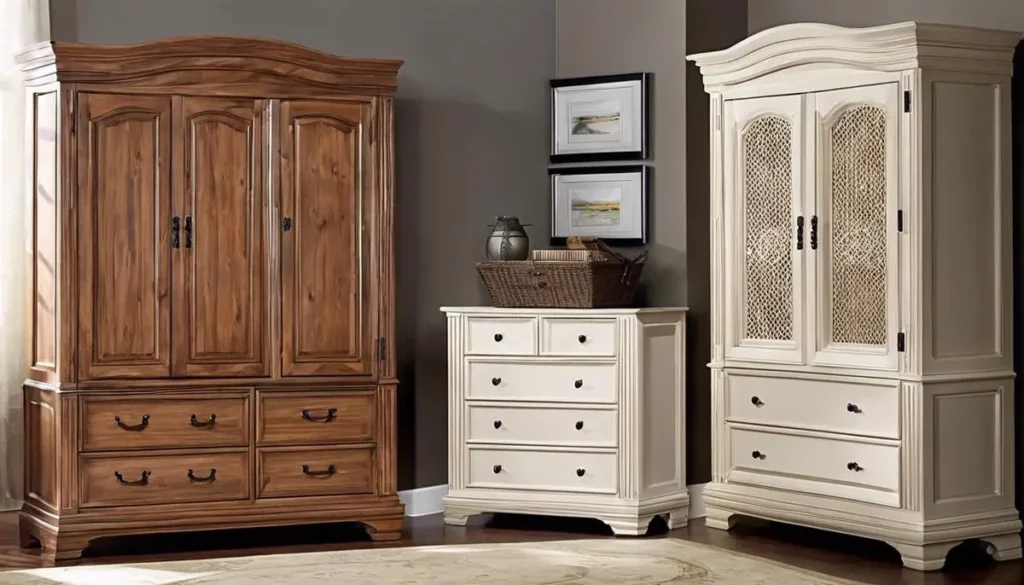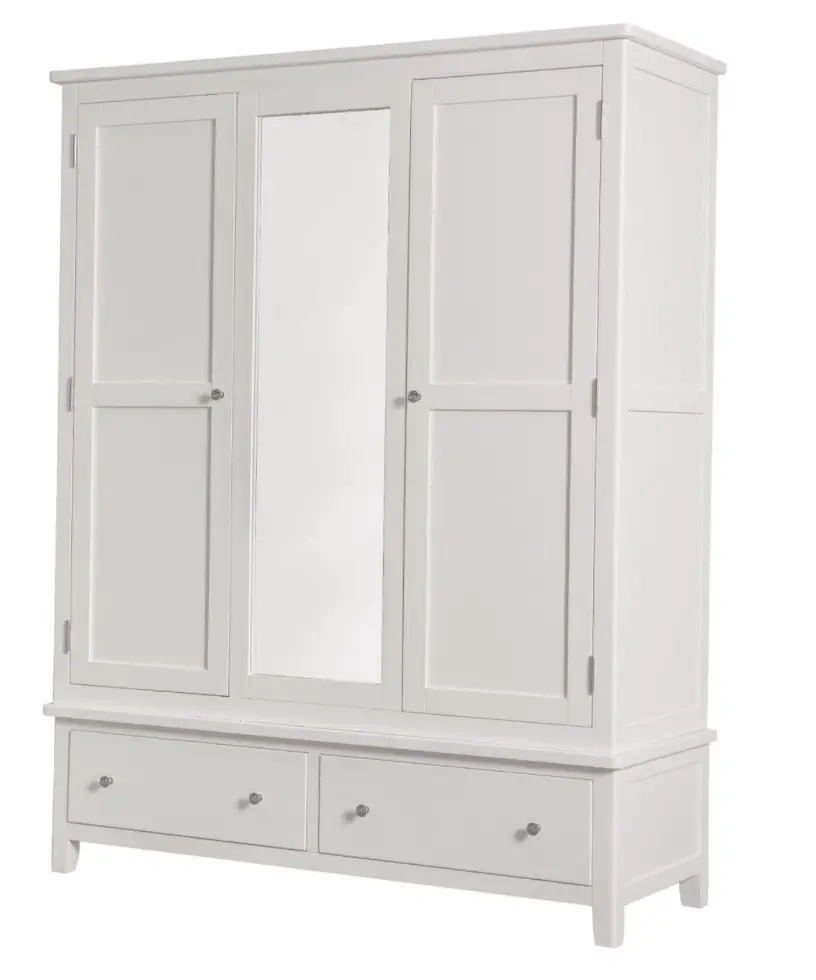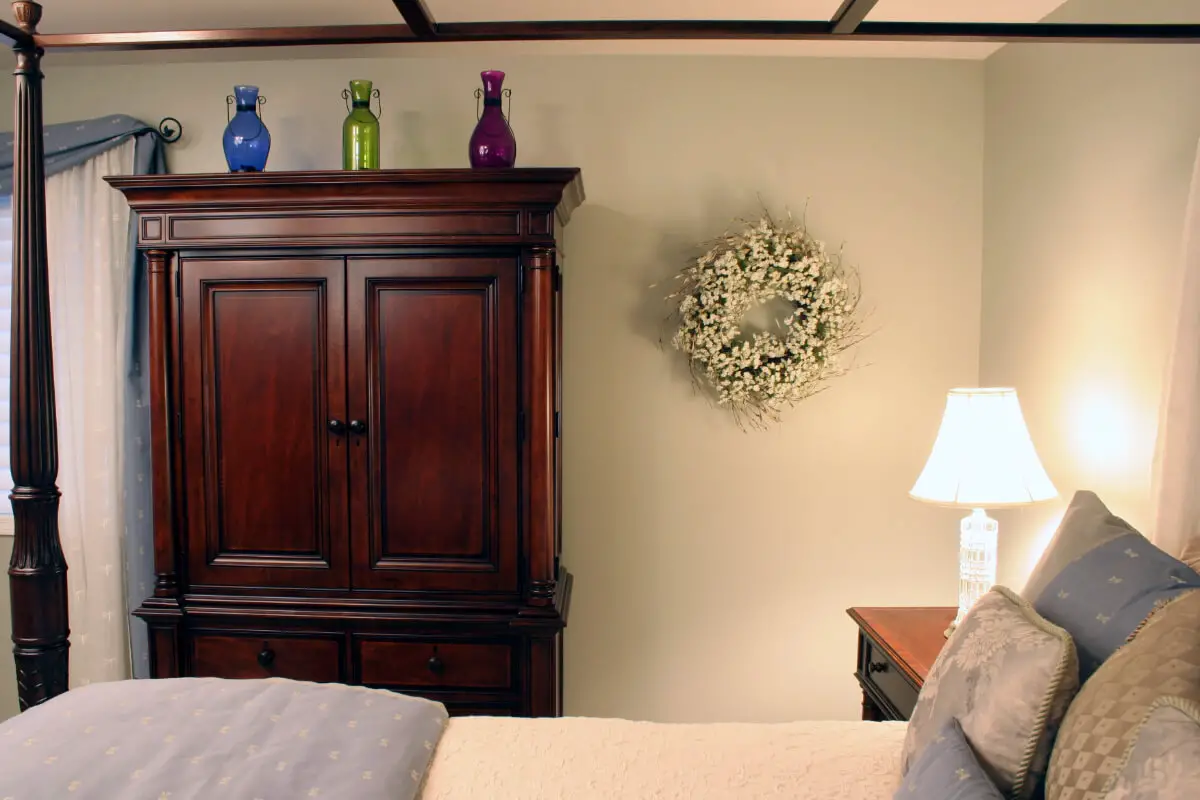Delving into the nuanced world of solid wood armoires, it’s a venture etched with beautiful designs, impressive craftsmanship, and timeless utility. The beauty of owning a solid wood armoire extends beyond mere aesthetics. It’s a versatile piece that provides storage while accentuating the elegance of your interior space.
The style, design, and the type of wood used are just a few factors contributing to selecting the most suitable armoire for your home. Furthermore, an armoire’s longevity depends on its maintenance, which can often be overlooked but plays a decisive role in preserving its magnificence. As a spirited expression of personal style, customizing your armoire adds a touch of personality while aligning with evolving trends and personal tastes.
Table of Contents
- Selecting the Right Armoire
- Maintaining and Caring for Your Armoire
- Customizing and Restyling Your Armoire
- Related Content
Selecting the Right Armoire
Whether you’re starting from scratch or looking to upgrade your home with quality, authentic pieces, choosing the right armoire can be daunting. Putting time and effort into this choice not only uplifts the aesthetic value of your space but also offers the functionality you need.
If you’re after a personal touch only solid wood armoires can offer, here are essential factors to make the wisest decision.
First, identify the wood type. Not every tree is created equal. While you might be initially drawn to oak for its durability, you might want to think twice if heavy furniture is a hassle. For lightweight options with a similar level of strength, consider ash or maple. If you lean more towards a distinct color and grain, cherry and walnut are excellent choices.
Second, decide on the construction approach. Different methods attest to the durability and lifespan of the furniture. Dovetail joint construction is known for its robust connections and resistance to being pulled apart. If durability isn’t your primary concern, consider dowel joints or mortise-and-tenon methods, both attractive and economical alternatives.
Third, scrutinize the finish. A quality finish ensures that the armoire will keep its charm over time, protecting it from premature wear. High-quality items often feature a clear finish that allows the wood’s natural beauty and grain patterns to shine. Similarly, pay attention to whether the finish is even throughout the piece, keeping an eye out for runs or drips, which can indicate rushed craftsmanship.
Fourth, look for adjustable components. As your storage needs evolve, versatile features like adjustable shelves or removable clothes rods will be helpful. These customizable aspects extend the armoire’s functionality and future-proof it for varying uses.
Fifth, check hardware quality. The handles, knobs, and hinges can drastically impact the user experience. Solid metal components are usually the best, giving off a chic, polished look. Steer clear of plastic or flimsy metals that can break or wear out quickly.
Lastly, pay attention to the armoire’s style. While having a unit that matches the existing furniture is ideal, don’t feel obligated to stick only to what’s similar. Sometimes, an accent piece that stands out can infuse your room with character and charm.
Finding the perfect solid wood armoire doesn’t have to be a daunting task. By keeping these factors in mind, anyone can quickly and confidently navigate the somewhat complex world of furniture buying.
It might take a little extra research and patience, but the satisfaction of finding that solid wood armoire that speaks to you and fits perfectly in your space is worth the effort. Happy hunting!
Maintaining and Caring for Your Armoire
The beauty of a solid wood armoire truly lies within its longevity; a well-cared-for piece can last decades, perhaps even centuries, gifting warmth and charm to your living space, unlike any other furniture piece. To maintain this legacy, understanding the best practices for preservation and, by extension, extending its lifespan is critical. Here are some helpful tips.
Even the most beautiful armoires can be subject to damage over time. One of the most prevalent issues? Moisture. It’s a silent eroder of your armoire’s beauty, gradually distorting its shape.
Therefore, consistent humidity control is crucial to keep the timber from expanding and contracting, leading to cracking or warping. Use a dehumidifier in rooms with higher moisture levels, or consider a furnace humidifier for more arid environments to achieve the ideal 40-60% relative humidity.
Another factor in wood preservation is the role temperature plays. Sudden temperature changes can impact the wood negatively, along similar lines as humidity, causing expansion and contraction. Aim for an indoor temperature between 60-80 degrees Fahrenheit benefits the wood.
Proper cleaning techniques can also preserve your armoire’s beauty. Avoid using multi-purpose cleaners as they could potentially dull the finish. Instead, opt for soft, dry cloths or feather dusters for regular dusting. A cleaning solution designed for wood furniture should be used for more thorough cleaning.
Exposure to sunlight is another enemy of solid wood furniture. The UV rays can cause severe fading and discoloration. Therefore, keeping armoires out of direct sunlight or using UV-protective window treatments or films is advised.
Minor scratches and dings are an inevitable part of the story of any wood piece. However, these instances can be kept minimal with simple precautions like using felt pads beneath objects that would be placed on the armoire and using coasters to avoid water marks.
Deep cleaning the armoire regularly, say semi-annually, is also an excellent practice. This might include removing items, vacuuming the drawers, and cleaning the hidden surfaces. This not only keeps your armoire looking fresh but also aids in identifying any issues early on.
Lastly, commit to periodic maintenance. This includes addressing minor repairs, touching up finishes, or re-polishing. On a preventative note, consider resealing the wood every few years to maximize protection and prolong the piece’s life.
By adhering to these best practices, preserving a solid wood armoire can become a satisfying task rather than a daunting chore, ultimately enhancing the aesthetic charm and extending the lifespan of an already majestic furniture piece.

Customizing and Restyling Your Armoire
Diving into the specifics of actual customization and restyling, adding personal touches can exemplify the one-of-a-kind charm of an armoire. The transformation of a simple armoire to a piece that radiates individuality begins with planning the desired look.
Is there a distinct color scheme in the room that the wardrobe must blend with? Or does the owner task it with standing out as the centerpiece? Be clear on these questions before proceeding.
The journey of restyling begins with color. The traces can tell a fascinating there-and-back-again story of multiple layers of paint over time or the perfection of a single finish look. Painting opens the door to endless possibilities, from the traditional antique look to vibrant contemporary styles. There’s no limit to imagination or daring when selecting the perfect shade or pattern.
Next, custom hardware presents another opportunity for personalization. Although the quality of the hardware was touched upon earlier, defining its look wasn’t. Over the shapes, sizes, and finishes of hardware options lies vast, uncharted territory for each individual to discover. Selecting unique antique brass door handles, contemporary chrome pulls, or even whimsical ceramic knobs can define the design direction.
Aside from color and hardware, decoupage is a creative yet simple technique that can add oodles of charm. Decoupage involves gluing decorative paper cut-outs onto an object and coating it with varnish. Perhaps an old map or a favorite comic strip is waiting to adorn an armoire door.
Lighting, frequently overlooked, can play an instrumental role in restyling. Softer or dramatic effects can be achieved by introducing interior or exterior lighting. A daydreamer might fancy a string of fairy lights, or LED strip lighting can highlight the armoire’s contents, casting an air of grandeur.
On the inside, rethinking storage offers plenty of room for customizing. Ready-made or custom cloth liners for shelves and drawers, along with the division of space for different items, can enhance the functionality of an armoire while adding personal flair. For an added touch, installing a mirror or selecting a unique hanging rod or hook can elevate the inside of your armoire.
Finally, adding embellishments provides an additional layer of personalization. Stencils, wooden appliques, moldings, or cornices can enhance the faces and corners of armoires. These finishing touches can reshape the wardrobe’s aesthetics, creating a visual delight that harmonizes with taste and room decor.
So there you have a plethora of ideas to restyle an armoire. Remember, customization is about expressing individuality while adding an element of surprise to an otherwise standard piece of furniture. Play, experiment, and have fun on the journey to creating a made-for-you armoire.

Armoires, in their robust nature and elegant appeal, have stood the test of time as prime furniture pieces, preserving our precious belongings while enhancing our décor. Selecting the right armoire involves carefully considering the type of wood, its design, size, and area in which you’ll place it.
Keeping it in the best condition requires consistent attention with regular cleaning, dusting, and preserving from damage. However, embracing creativity and tailoring your armoire to match your evolving taste brings an element of expressive individuality.
This amalgamation of selection, care, and personalization ensures that your solid wood armoire will remain cherished, embodying aesthetics, function, and personal expression despite changing times and styles.
If you’re interested in how Mondoro can help with Armories wood, home decor furniture or any custom design you have in mind – we would love to talk to you about how we can help you.
Find out more about how Mondoro can help you create, develop, and manufacture excellent home decor and furniture products – don’t hesitate to contact me, Anita. Check out my email by clicking here or become a part of our community and join our newsletter by clicking here.
Mondoro gives out a FREE Lookbook to anyone interested. You can receive a copy of our latest Lookbook by clicking here.
Listen to our Podcast called Global Trade Gal. You can find it on all major podcast platforms. Try out listening to one of our podcasts by clicking here.
Subscribe to our Mondoro Company Limited YouTube Channel with great videos and information by clicking here.
Related Content
Coffee Table Vs. Tea Table: An In-Depth Look
Coffee and tea tables embody different aesthetics, serve distinct functions, and carry a unique heritage, making the selection process a nuanced journey. While they may seem similar at first glance, delving into their specific attributes uncovers an intriguing world of contrasts and possibilities.
You can discover more by reading Coffee Table Vs. Tea Table: An In-Depth Look by clicking here.
What Is Rubber Wood? Origin, Source, Processing – All About
Rubber wood’s rise in demand can be attributed mainly to its sustainability, affordability, and attractive appearance. In this comprehensive look at rubberwood, we’ll delve into what makes this material unique, its origins, benefits, applications in furniture making, and some tips for its care and maintenance.
You can learn more by reading What Is Rubber Wood? Origin, Source, Processing – All About by clicking here.
Tempered Glass Vs. Regular Glass, Pros, And Cons
Glass is a popular material used in various applications, from home decor to the automotive industry. It is a versatile and beautiful material, but not all glass is created equal. Tempered glass and regular glass are two popular types of glass that serve different purposes and have different strengths and uses.
You can learn more by reading our blog Tempered Glass Vs. Regular Glass, Pros, And Cons by clicking here.


